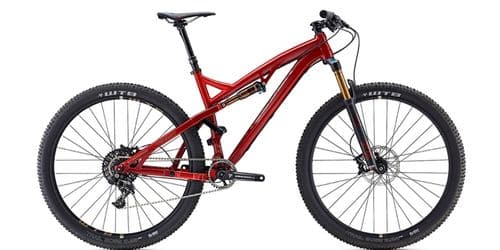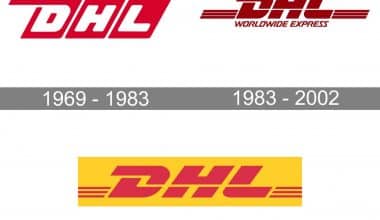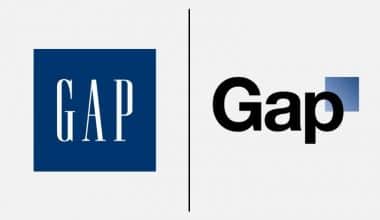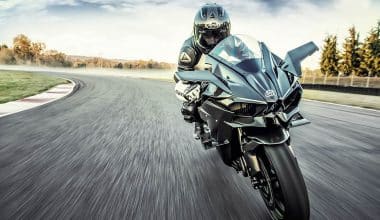Many mountain bikers decide to buy new gear based on how much they know about the company’s history, attitude, and past. But because there are so many mountain bike brands on the market, it can be hard to look around and find a good fit. A list of European mountain bike brands and expensive mountain bike brands has been compiled by us to help you make your choice. Check them out!
Best Mountain Bike Brands
You need to get one of the best mountain bike brands to enjoy your mountain biking. We have compiled a list of the best mountain bike brands to help you select the best. Here is the list of the best mountain bike bands you can go for:
#1. Specialized
Specialized, which was established in the early 1970s, is recognized for having sparked the growth of mountain biking in the US. Despite the fact that their bikes are made in Taiwan (as is typical in the cycling business), the company has its roots firmly in California. The Stumpjumper is a mainstay in their collection and a model that many people have probably heard of. When it came out in 1981, the Stumpjumper was the first mass-produced mountain bike in the world. The company still sells more than ten different versions of the full-suspension model with the same name, including the Stumpjumper Evo, which is more aggressive and made for downhill riding. There is a bike for just about everyone in the brand’s larger collection, which includes everything from entry-level mountain bikes to gravel, road, and electric bikes.
Although the Stumpjumper may have blazed the trail, Specialized keeps innovating year after year. More recently, Specialized took it a step further by partnering with the non-profit Call2Recycle to develop a method for recycling all of its e-bike batteries sold in the USA. The business also concentrates on inventing innovative solutions to typical issues, such as its SWAT Technology (short for “Storage, Water, Air, and Tools”), which incorporates tool and tube storage into some of its frames.
Specialized has experienced its share of setbacks but is still a big brand. The most infamous incident involved a 2013 cease-and-desist letter that the brand addressed to a tiny café and bicycle shop in Canada with the same name as one of their road bike models, Roubaix (which is also the name of a popular biking destination in France). However, it was a wonderful lesson that the bicycling community cares and that public relations are important. Eventually, they changed their minds and preserved their reputation.
#2. Trek Bikes
One of the most well-known brands in the industry, Wisconsin-based Trek makes excellent bikes in practically every price range. Although Trek is likely better recognized for its emphasis on road cycling (made particularly well-known by Lance Armstrong in numerous Tour de France contests), their selection of mountain bikes is as good. The Trek Fuel EX, a long-standing model that has been praised for being a jack of all trades, is one of their most well-known models in this category. In addition, Trek has done a wonderful job of maintaining its can-do attitude despite undergoing several changes to its geometry and design over the previous 10+ years.
Despite not always being at the cutting edge of innovation, Trek has maintained its relevance and consistently garnered favorable reviews from riders throughout the industry. This is due in part to Trek staying true to its beginnings by sponsoring and supporting deserving athletes like Loris Vergier, Reece Wilson, Rachel, Dan, Gee Atherton, Brandon Semenuk, and Emily Batty, to mention a few. In addition, Trek has consistently stuck by its products and offers a lifetime warranty on frames (which I have personally witnessed them uphold). It’s also important to note that Trek is one of the few major brands that allow you to completely personalize your bike. I’ve spent way too much time daydreaming about my future setup and choosing the ideal color schemes for their Project One online bike builder.
#3. Giant
One of the biggest bicycle brands in the world, Giant, is well known. In addition to producing a vast array of bikes under the Giant trademark in all price ranges and sports, they also serve as a manufacturer for a number of other well-known companies. Giant is one of the top brands when it comes to creating high-quality bikes in both aluminum and carbon fiber because of its long history in manufacturing.
Giant has been making mountain bikes for a long time and is often at the cutting edge of performance and design. With innovations like the 2005 introduction of the Maestro suspension system and its improvements in frame manufacture, particularly with its own Aluxx aluminum.
Giant is able to make bikes at such low prices because it knows how to make them and uses economies of scale. Even though most companies require OEM or own-brand equipment, Giant goes above and beyond because they make everything from grips to suspension forks. In fact, it’s not unusual for Giant to outfit a bike with Giant branding everywhere but the drivetrain. Giant is frequently able to undercut most other brands by offering features at a price point that you might not find on other bikes because the Giant components are typically of good quality as well.
#4. Cannondale
In the history of the American bike industry, Cannondale has always been at the forefront of innovation. However, the business did not begin with bikes. Joe Montgomery, the company’s founder, started out in a loft above a pickle plant in Connecticut, across from the defunct Cannon train line. Early products included bicycle trailers and backpacks for carrying bikes while camping. In 1983, Cannondale introduced its first bicycle and pioneered a novel method of dealing with aluminum. The SM500 mountain bike from Cannondale hit the market a year later, in 1984. It had a European spring saddle and BMX style.
The business went through a tough period despite its early success, filing for bankruptcy in 2003. Later, Dorel Industries bought it, and they owned the name until this year when Pon Industries changed ownership once more. The current largest bike manufacturers in the world, including Focus, Lapierre, Santa Cruz, and GT, all support Cannondale strongly.
The Lefty fork from Cannondale is a prime example of the company’s willingness to produce distinctive and odd bikes. Although the company has enjoyed success in the gravity markets, its cross-country bikes, the F-Si and Scalpel, have garnered the most attention. However, given the makeover of the Jekyll enduro bike and reports of a downhill bike prototype with two shocks, this may alter.
#5. Santa Cruz
In the world of cycling, Santa Cruz is a bit of an outlier. Even though the company has only 14 dirt-focused models (including two e-MTB lines and a gravel grinder) and has been around since 1994, it has become a major player in a short amount of time. Even more impressive may be that they have grown a lot while keeping the feel of a small boutique brand. Over the years, this great balancing act has led to a lot of well-known models. Long-time riders probably have pleasant memories of the Bullit (of note: the Bullit’s moniker is returning in the shape of a new e-bike), Driver 8, VP Free, and Heckler. More recently, they have added the Nomad, Bronson (now produced in a mixed-wheel layout), and Hightower to their roster.
There are several positive aspects of Santa Cruz from the viewpoint of riders. Santa Cruz provides a lifetime warranty on their frames, just as many other businesses do. If you often ride through the mud, you’ll appreciate that the manufacturer goes above and beyond the competition by including the same warranty for all of their bearings. Santa Cruz bikes are also very well thought out, with no cheap parts and clear signs that the people who made them love the sport. The price of a Santa Cruz bike is its main drawback. In the end, you get what you pay for, but for the majority of budget-conscious riders, value-oriented options like Giant, Marin, and Diamondback frequently suit the bill better.
#6. Pivot Cycles
Despite not having a long history like the majority of the other businesses on this list, relative newcomer Pivot (founded in 2007) has already established a solid reputation. The fact that Chris Cocalis, a mountain bike superstar, founded the company, though, makes this growth in popularity less surprising. Pivot, which has its headquarters in Tempe, Arizona, is renowned for producing top-notch carbon bikes suitable for a range of sports. Their long-distance 29er, the Firebird 29, as well as the tried-and-true Mach 4, are popular models. Additionally, Pivot offers 13 additional models that range from e-MTBs to fat bikes to gravel/cyclocross bikes.
Pivot bikes are expensive, just like other boutique businesses’ products. Even though the quality and design of their frames are definitely top-notch, it can be hard to explain why they cost so much. As a point of comparison, their least expensive complete mountain bike costs more than $5,000. Also, Pivot only offers a 10-year warranty, while Santa Cruz gives you a warranty that lasts for life. However, Pivot clearly places a high priority on quality, so you will surely like it.
#6. Canyon
Even though Canyon didn’t come up with direct-to-consumer sales, the German company is thought to be the first in the bicycle industry to use it successfully. Canyon has had tremendous success in an industry that has traditionally been dominated by brick and mortar because of the mix of beautifully designed bikes and frequently incredible price-to-performance ratios.
It hasn’t always been easy sailing; in 2016, Canyon experienced some teething pains that caused important shipping delays. However, Canyon has since grown significantly, manufacturing industry-recognized bikes that range from some of the best budget mountain bikes to platforms specifically designed for racing.
It’s pretty difficult to make a mistake when purchasing a bike from Canyon if you are certain of what you want and are okay with a little out-of-the-box maintenance (Canyon has made a lot of effort to make this as efficient and straightforward as possible). The availability of bikes will actually be your largest issue because they are frequently out of stock due to tremendous demand.
#7. Ibis Cycles
Ibis Cycles is a boutique company that frequently goes unnoticed yet is renowned in the MTB world for building excellent bicycles. It was founded in 1981 by Scot Nicol in his garage and was privately owned until Nicol sold it to an investment firm in 2000. The brand shuttered its doors and declared bankruptcy less than two years later. However, the business reemerged in 2005 and unveiled its well-known Mojo carbon full-suspension mountain bike, which is still a mainstay in their line-up today. Ibis has released the Ripmo (and the even more aggressive Ripmo AF), a long-travel 29er that is tearing up the enduro racing scene with riders like Robin Wallner. Another intriguing fact is that the Ripmo can accommodate riders who are as short as 5’0″, which is unusual for bikes with 29-inch wheels.
Ibis concentrates its efforts on just seven bikes: one gravel grinder, and six full-suspension versions, including the made-in-the-USA Exie (the Hakka MX). They are impressively one of the boutique brands with the lower prices.
#8. Yeti Cycles
A California welder by the name of John Parker started Yeti in 1985 after turning his passion into a successful business. His expertise in welding and history in Hollywood special effects enabled him to pursue his love of mountain bike racing, and from the start, Yeti was a name associated with the competition. Yeti was immediately well-known due to the accomplishments of renowned racers like John Tomac, Juli Furtado, Missy Giove, and Myles Rockwell.
When mountain bike racing reached a fever pitch in 1995, the larger and better-funded Schwinn company bought the company. Yeti required funding to grow, and Schwinn required the knowledge of a successful veteran. Early in 2001, as Schwinn’s circumstances changed, two Yeti workers bought the business and took it into a new phase of innovation. The Yeti brand’s iconic turquoise continues to be a regular on podiums, and racing continues to play a significant role in the company culture.
European Mountain Bike Brands
Is buying one of the best European mountain bike brands stressful and confusing? Here is a list of the best European mountain bike brands you can go for:
#1. Mondraker Summum
Whatever the weather was like when the Mondraker guys checked in to watch the 2016 World Championships, it would have been a sunny day in Spain.
Danny Hart, Laurie Greenland, and Florent Payet all won races while riding the Mondraker Summum in Val di Sole, ensuring a victory for the brand.
#2. Scott Gambler 710
The Gambler, manufactured by the Swiss manufacturer SCOTT, is one of the lightest production bicycles made of aluminum on the market.
#3. Cube TWO15 Hpa Race
A new design that was put into place over the past year has made the Two15 lighter and more responsive than before. The frame now provides 215mm of travel at the rear despite being built around the 27.5-inch wheel. They make the German Two15 for the most difficult tracks, rocks, and roots.
#4. Lapierre Dh World Champion
As a result of Frenchman Loic Bruni’s successful 2015 campaign, the Lapierre DH World Champion is appropriately called.
The height, steepness, and weight of the manufacturing version need greater examination by the French company, but it should be a manageable task.
Expensive Mountain Bike Brands
The following are the expensive mountain bike brands you a check out:
#1. Santa Cruz V10 CC, with ENVE wheel upgrade
The Santa Cruz V10 is one of the most successful World Cup downhill bikes ever, and the premium construction comes with a hefty price tag! Despite all the research and development put into the technology utilized by the top racers on the World Cup circuit, this is surprisingly the only downhill bike on our list. Most likely, the stock bike builds that are offered to the general public don’t have the majority of that really advanced technology.
#2. Yeti SB115 Turq AXS XX1 Eagle
Brands will always face fresh and original problems as a result of the continual competition in the bike industry, but it’s perhaps more difficult when you’re upgrading an existing model. This was the issue that Yeti ran into while trying to replace the venerable SB100, a race-bred rocket ship adored by both trail and XC rippers.
#3. Specialized S-Works Turbo Levo
A massive 700Wh battery, Brose 2.1 motor system and FACT 11m carbon fiber chassis are all included in the latest generation Turbo Levo. The RockShox Reverb AXS dropper post is one of many new specifications added to the S-Works model for 2020. Additionally, the bike has a titanium-railed saddle, a Deity stem, carbon Specialized handlebars, carbon Praxis Works cranks, and a Kashima suspension system from Fox Racing Shox. Carbon wheels from Roval and SRAM Code RSC brakes are also included.
If $18,000 is a bit out of your price budget, you’ll be relieved to learn that the 2020 range starts at $7,600 for the aluminum model.
#4. Scott Spark RC SL EVO AXS
The new Scott Spark was introduced in late 2021 with big goals, and it received the typical range of passionate criticism that comes with a significant redesign. We had the good fortune to test out the most recent model and publish a thorough 2022 Scott Spark review that didn’t let us down. Although its hidden shock design and intricate TwinLoc system may enrage your accountant and neighborhood mechanic, they promise high expenditure and perhaps difficult serviceability. It’s difficult to argue with such beautiful, minimalist lines, which you’ll spend hours ogling—once your eyes stop watering enough to allow for good vision, that is.
#5. Giant Trance Advanced Pro 29 0
The Giant Trance Advanced Pro 29 0 has arrived to blast the budget even further. Giant isn’t necessarily a name you’d expect to see on such a list, but Reign made our last breakdown after exceeding the $10k barrier. You have the choice of enhanced tunability with the 130mm Fox 34 with a Grip2 Damper and 120mm Fox Float X Factory, allowing for a change of the head and seat tube angles.
#6. Trek Slash 9.9 XX1 AXS
The Slash, which Trek described as “monster truck meets the magic carpet,” got a much-needed makeover in 2021. Our evaluation of the 2021 Trek Slash will let you know what we think of the most recent model. The newly created enduro frame is constructed like a seedy nightclub bouncer, paying little attention to melon-sized trail chunder and jagged rock gardens.
For more assurance on turbulent descents, higher-end models come equipped with the incredibly firm RockShox ZEB fork. However, for those seeking even greater exclusivity, we recommend the over $17,000 XX1 AXS Flight Attendant model. The Slash is another evidence that electrical automation is here to stay on bicycles. Its fork, shock, dropper post, and rear derailleur are all operated by various servos and machines. When a bike looks this amazing, we’re ready to overlook the impending Terminator robot apocalypse.
#7. Pivot Mach 4 SL
The development of bikes occurs at a breakneck pace, and XC has been for years testing the limits of light, laser-guided race rockets. Technology is advancing the race field faster than sound, from the addition of dropper posts with little weight penalty to forward-thinking geometries intended to improve confidence on increasingly challenging descents.
Enter the Pivot Mach 4 SL, which openly encourages death grip descent for both lycra-clad racers and neighborhood segment seekers. This bike made our list the first time around, and since there is an even more expensive build available, we have chosen to highlight it again.
Why Are Mountain Bikes Getting So Expensive?
The following are the reasons why mountain bikes are expensive:
#1. Currency Fluctuations
Due to the ongoing trade conflict between the US and China, both the Australian dollar and other major currencies have had a difficult two years. Along with the impact this is having on production, prices have increased overall as a result of Australian distributors purchasing bikes and components at substantially higher rates than in the past.
#2. Increasing Labour & Shipping Costs
Expenses of labor and shipping are rising since a large portion of the bicycle manufacturing business is headquartered in Taiwan and China. As a result, the final retail price for bicycles is rising as a result of rising factory worker pay and rising shipping costs to other parts of the world.
#3. New High-End Parts
As you can see from this list, these top-of-the-line versions feature a lot of SRAM AXS, Fox Live Valve, and carbon exotica. These components are much more expensive than any that came before them because they weren’t around previously. It will be a bloody expensive bike if you take a bike and add a $3,000 gearbox and $3,000 worth of electronic suspension.
#4. e-MTBs
As a result of the electric pedal-assist mountain bike’s rising popularity, you’ll also notice some extremely high-end e-MTBs on this list. When you equip a mountain bike with a motor and batteries, the price jumps by several thousand dollars. Add some carbon wheels and electronic shifting after that, and, well, you get the idea.
What Are the Best Beginner Mountain Bike Brands?
The following are the best beginner mountain bike brands you can go for as a beginner:
#1. Specialized Chisel
For riders who desire a lightweight, efficient bike for challenging climbs and long rides, such as aspiring XC racers, the Specialized Chisel is the perfect option. It borrows geometry from Specialized’s race-winning Epic hardtail, but it uses an aluminum frame with Smartweld technology to keep prices down.
#2. Specialized Fuse
The Specialized Fuse is a good option if you’re searching for a trail hardtail with a little more downhill aptitude. It can handle longer and tougher descents since the geometry is longer and lazier than the Chisel’s. The 130mm fork will soften rough impacts and smooth out rock gardens.
#3. Bombtrack Cale
Despite being the smallest company on this list, Bombtrack has experience creating durable bikes because they are BMX enthusiasts. If you’re looking for something from a smaller, more independent manufacturer, the Cale is a perfect choice because its geometry and suspension travel are extremely close to those of the Specialized Fuse.
#4. Specialized Stumpjumper
Due to their size as a manufacturer, they produce several well-known bikes. In actuality, the Stumpjumper could be the most well-known mountain bike ever. It has been around since 1981 and is now marketed as the best all-around mid-traveler. Large cross-country rides and expert-level downhill terrain are both no problem for it.
#5. Trek Fuel EX
The Trek Fuel EX is the main opponent of the Stumpjumper. It’s a mid-travel trail bike, similar to the Stumpy, that can handle a variety of trails. It makes use of Trek’s ABP (Active Braking Point) suspension technology, which offers a softer ride for those seeking more comfort and maintains more control when braking (new riders tend to brake a lot!).
How Do I Choose a Mountain Bike?
Here are some things to check before choosing a mountain bike:
#1. Get the Right Size
The proper frame size is crucial, and everything else is secondary. Don’t rely on the stated size, though. Seat tubes have been getting smaller even as frames have been longer, so many businesses are switching to small, medium, and large instead of the increasingly erroneous numbers. The medium of one brand can fit the big of another.
As an alternative, make sure your bike fits you properly. Look for (and compare) the measurements for the reach (the distance between the saddle and the bars) and stack (the distance between the center of the crank and the mid-head tube), and don’t be afraid to go farther than you would on a road bike. With a long front triangle, the axle is placed forward, allowing you to weigh it (for grip) without running the risk of colliding directly with the bars. Maintaining a solid grip on your front wheel also aids in climbing.
Just be careful not to travel so far that there is no standover clearance. Just a few centimeters will do. A short seat tube gives you the most maneuverability, but make sure you can still reach the whole pedaling height without extending the seatpost too far. The riding position can be greatly altered with different stems, bars, and seatposts. Also, keep in mind that 29ers have taller fronts.
#2. Choose a Wheel Size
Diameters now come in two simple options: 27.5 inches (650 b, aggressive trail, and downhill) or 29 inches (XC and trail). But the recent trend toward 29-inch downhill wheels and Plus sizes with wide rims is making things more complicated.
For now, the choice is still roughly the same: either bigger hoops for long distances or smaller, stronger ones for tearing up trails. Strong, stiff, and light(ish) 29ers will certainly become more prevalent in the coming years, along with proper tires and frames. Hardtails can benefit greatly from plus sizes, but they are sensitive to tire pressure and there is considerable debate as to whether they will actually remain.
#3. Choose Hardtail or Full-Suss
Expensive components of complete suspension include the rear shock, bearings, linkage, and more manufacturing complexity. As a result, a hardtail bike will probably have a better parts specification than a full-suss bike at the same price. There will be less upkeep and troubleshooting required.
However, full-suss bikes are now more advanced than ever, so their benefits may still outweigh their drawbacks. There is no need to discount either, but it is a misconception that you must “learn” on a hardtail before acquiring a “large bike.” Actually, it comes down to preference.
#4. Don’t Obsess About Weight
Although weight matters, strength off-road matters just a little bit more. Flimsy has no place when ruts, roots, and random rocks can grab you from all sides. Your speed will be affected, as will your steering precision, cornering ability, and confidence. Keep your bike clear of the hedge and carry a couple of extra pounds. And from the workshop as well.
#5. Beware the Flashy Trinkets
Don’t be deceived by a beautiful rear derailleur; it’s usual for these to be upgraded in order to help sell the bike. A good gearbox is essential, but so are cranksets, shifters, and even chainrings; they’re not far behind. Think about your plan for future updates. Components with lower specs are bulkier, less useful, and not worth paying more for.
#6. Choose Suspension Quality, Not Quantity
Keep in mind that OE (original equipment) units may have a different (typically lower) specification than identical-looking aftermarket units. Good air spring and good damping will benefit you more than any more travel.
#7. Look For Futureproof Design
Check for the most recent/popular axle diameters and spacing, as well as a headset, bottom bracket, and seatpost diameters. Internal gear cabling and brake hosing may look better, but they may be noisier and more difficult to maintain than external routing for “stealth” droppers.
#8. Keep Some Budget Back
With its increased coverage, robust design, and respectable peak, a dedicated trail helmet will be beneficial to you. Additionally, you might require a bag and eyewear to protect you from flying debris. There are also sticky shoes for flat pedals, as well as shoes made specifically for mountain bikes, cleats, and clipless pedals.
You might also need new tires if your terrain requires them, or just because OE tires might use tougher, less expensive compounds and/or heavier steel beads than their aftermarket counterparts. Additionally, you might want to tweak your gears and almost surely alter the size and style of your cockpit.
Conclusion
This list of the best mountain bike brands should be helpful to you as a mountain biker. You need the best mountain bike brands to make your ride comfortable! You deserve all the fun, so go for the best!
Related Articles
- BEST YETI BLACK FRIDAY DEALS IN 2022
- Best Motorcycle Insurance Companies of 2022: Coverages & Quotes
- Forex Trading 101 – How To Have A Good Foundation For Your Trading
- BEST MOTORCYCLE BRANDS: Top 21 Brands in the World for Beginners & Pros
- THE BEST FUEL MANAGEMENT SYSTEMS FOR YOUR FLEET






